Winner, 2020 International Book Awards – LGBTQ Fiction
Finalist, 2020 Foreword INDIES Book of the Year Awards – LGBTQ+ Fiction
Margot Wright has led a deliberate life. At 18, she left her unusual and abusive family situation and never looked back, and then two years later she devoted herself wholly to Estelle Coté, her first and only love. But now, at 45, freshly retired from a career in antique firearms dealing, and settling into a new home with her wife, Margot finds herself feeling restless. Bored. She admits this to herself on the day she visits Le Galopant, a historic carousel that has become bafflingly meaningful to Estelle; and, as with anyone wishing to dodge a midlife crisis, Margot sets her feelings aside, intending to ignore them for as long as possible.
At La Ronde, the amusement park where Le Galopant is showcased, Margot is accosted by a 17-year-old girl named Katherine de Wilde. Katy is hyper and unrefined, “rural,” everything Margot cannot stand, yet she finds herself thinking more and more about the lisping girl in the Converse sneakers and “Meat is Murder” T-shirt as the days tread on. Even after Estelle discovers a massive secret she’s been keeping for a decade, forces her into couples counseling and then on a road trip to confront this secret, Margot is unable to stop Katy from seeping into her thoughts. So when Katy phones her one morning with bad news, “They’re taking down Le Galopant for good. It’s broken!” Margot yields to impulse and pursues her interest in the girl.
Set between Montreal, Quebec and various American cities, Carousel is a story about secrets—secret yearnings, lives, and losses—and the measures we take to protect our loved ones from the monsters we see ourselves to be.
‘”Spellbinding and beautifully written—a galloping ride into love, relationships, and friendship,and the burdens of family history.”
—Cora Siré, author of Behold Things Beautiful
“Dear Reader: This novel contains evil Siamese cats, total disregard for Chekhov’s gun theory, much French without translation, a madhouse in Cape Cod, several carousel horses named Napoleon, Bertrand the secret knitter, waffles, a merry-go-round, a marriage in crisis, a crazy mother, and references to Les Nessman. What more could you ask for in April Ford’s debut?”
— Colleen Curran, author of Out for Stars and the Lenore trilogy
“An arch and darkly comic look into obsession, marriage, and family trauma, Carousel takes us deep into the tilting, whirling world of Margot Soucy, its one-of-a-kind protagonist. Caught between three formidable women—intimidating Estelle, insouciant Katy, and unstable Marguerite—Margot must determine for herself the answer to the question that dogs modern life: Why do we want what we want, and what will we sacrifice to get it? Her journey will stay with you long after your head’s stopped spinning.”
—Anna Leventhal, author of Sweet Affliction
“Carousel is an acerbic but open-hearted novel about break-ups and new beginnings that is as lovingly crafted as its central metaphor. And there is a depth of characterization here sadly lacking in so much contemporary fiction. An amazing debut novel.”
—James Grainger, author of the bestselling novel Harmless
Click here to access a new Reading Guide for Book Clubs
powered by Crowdcast
“Echidna,” I said.
“What?”
“Pierrot’s print reminds me of Echidna, the Greek she-dragon.”
Estelle lit up. “Mais oui. Why didn’t I think of that?”
“I’m impressed I just did.”
“And you operated a digital camera. It’s been a big day for my GoGo.”
I reached above the sink, where the medicine cabinet yielded acetaminophen and Estelle’s prescription bottle of Lorazepam. I shook out two pills of the former, one of the latter, and filled her empty glass with water.
“Take your bath so we can look at the carousel pictures together in bed.” This would give me time to study the one of Katy, for it had been nagging at my consciousness more than anything else since my arrival home.
Estelle hadn’t made any progress in our bedroom. It was as I had left it that afternoon, her chest of novelty cameras still open, my men’s lightweight flannel nightshirt slouched over the lamp. The room gave the impression of a suspended departure rather than a celebrated arrival. I closed the chest and dragged it beside the Queen Anne burl walnut highboy I had gifted to Estelle our fourth year together, which she cunningly re-gifted to me the following year, on our “wood” anniversary, confessing that the dresser was too impractical for her everyday use. As a demonstration of her rue, she had filled each drawer with silly bric-a-brac she knew I enjoyed but was too proud to acquire on my own: Bazooka Joe bubble gum, miniature green army men, a Lego medieval village set, t-rex-patterned handkerchiefs
Rather than lose time making the bed and fluffing the pillows as I customarily did before we turned in, I sat on the edge and turned on the digital Polaroid. The images Katy had captured were, as she had promised, the work of a steady—and remarkably skilled—hand. Estelle would be pleased. There was a series of the horses from behind, the undersides of their lovely silver hooves flashing the lens; a series of the horses in profile that emphasized the precision of their sculpted muscles and manes; and a cheeky shot of Étienne brooding into the horizon, evidently unaware he was the subject of Katy’s whim of the moment. Katy had photographed me, too, and the shot was so abysmal that in the morning, with fresh eyes and a fresh mind, I would have to figure out how to delete it. After a few more horses, I came to the photograph I had taken. I compared it with the printed version, and I was severely disappointed. Whatever magic I had believed existed in the shot had remained at the park. It was just a picture of a teenage girl who was all limbs, her smile too wide and luscious for her face, and an obnoxious sliver of a gap between her top front teeth like the sort admired in select famous actresses and models, but which, in common women, betrayed orthodontic negligence or inferior social class.
“What are you looking at?”
I jumped to find Estelle standing before me, wrapped in a plush lavender towel and smelling of cinnamon body wash.
She sat beside me and nipped my earlobe. “I’m sorry,” she whispered. She slipped her fingers down the front of my towel as she worked her lips along my neck.
With the two versions of Katy looking up at me—a funhouse, mocking me—I couldn’t allow things to go any further. Besides, the resurrected desire I had felt for my wife in the bathroom, had felt in twinges throughout the day, was once again dormant.
“I’ve had quite the day, Elle.”
Estelle pressed her teeth against my collarbone as she considered my statement. She wrapped her towel more tightly around herself and crawled to the top of the bed and then under the sheets. “Sure. I get it.”
I turned off the Polaroid and hid the print of Katy in a pocket inside the camera bag. “Tell me more about this Dr. Weinstock. And since when—no, why, I mean really, have you been seeing him?”
“Do you want the short version or the long version?”
“I have nowhere to be in the morning.”
A yogi’s controlled exhalation, silence, and then: “What about our rule?”
“I didn’t start this conversation.”
A pause. “But if we get into a fight.”
“We’ll stop right away and wait until tomorrow.”
“Promise?”
“Yes.”
“Remember, you asked.” Estelle pulled the sheets up over her shoulders. “I thought there was something wrong with me, like a depression, because everything was upsetting me, so I went to the guy Marianne recommended. You have to believe me, Margot, everything under the sun was upsetting me, not just you. Sometimes I’d have to take emergency breaks at work to go sob in the washroom. Jean-Jacques’s been the biggest jerk lately, and I can’t take it, working with him day in day out and listening to his bitching every time we don’t get an artist. I’m doing the best I can. I actually left one of our meetings in tears. So,” another exhalation, less controlled this time, “I went to Dr. Weinstock, assuming after he heard me talk for five minutes he’d diagnose me with clinical depression and send me to a walk-in for a prescription of Paxil or something. But instead he told me to come back the next week. Sort of. He asked me to come back.”
“And you went back.”
“Yes. That was in March, right after you quit Le Canon. Right before we found this place.”
“Why?”
“Why, what?”
“Just, why, Estelle? You’ve been seeing a therapist for five months? What’s so terrible that you need to see a therapist for five months?”
Though just that afternoon I had entertained notions of our relationship being in a perilous state, now I felt the searing panic of a person about to be ejected from even the unhappy securities of her life. My wife had been doing something significant and transformative behind my back. How else was I supposed to feel?
“Oh, fuck, I shouldn’t have said anything tonight.”
“But you did, and I’m guessing it wasn’t all the wine talking.”
I turned to her and good thing I did, for her face slick with tears quelled my anxiety enough for me to consider her explanation.
“Look, lately you’ve been, I want to say it nicely … brash? Angry? All the time. Your decision to quit Le Canon was your decision, remember. I complained a few times about missing you when I got home from work, and you imagined I was asking you to quit your job. That’s a lot of pressure on me. And you’ve been on this bender about your parents—tu es obsédée. I get it, but I didn’t appreciate you griping about it the one time this year my family was able to come visit. And I’ve stopped asking you to work functions, because I never know what you’ll say to set someone off. Like you did with Marianne? When she asked what you’d like to do next and you said sell firearms to Al Qaeda? I mean, she was genuinely interested.”
At this last I laughed, which earned me a scowl, but not one entirely rooted in opposition.
“Come on, Elle, it’s too tempting. She’s so gullible. Remember that time she wired money to Micronesia based on some email claiming you were stranded there?”
“Tu vois? That’s just it. You enjoy being cruel. What has any decent person in our lives ever done to you?”
“Is Marianne still your friend?”
“That’s not the point. You always do this.” Estelle fought back a yawn.
“Let’s continue this conversation tomorrow, baby girl.”
After a contemplative moment, she turned down the sheets on my side of the bed and beckoned sleepily to me. The Lorazepam hours were upon her. The sun had set behind the crystalline Saint Lawrence Seaway, caliche horses nickered as they passed one another along streets hugged narrow by nineteenth-century stone structures alight with nouveau bars and restaurants, a string quartet stationed at one of the Seaway’s docks implored the night crowd with a hopeful, festive rendering of a Prince song. As I settled beside my wife and lay my head on her shoulder, I thought about our first time together as a married couple: it had given us an opportunity to redefine our relationship. Though we had been together for twenty-five years, in some ways I had come to think of the day of our sanctioned marriage, sixteen years after Estelle stopped me on rue Saint-Paul, as who we were in the world. People seemed most comfortable understanding relationships in terms of years legally married, so while Estelle and I were firm when we stated we had been married for nine years but together for twenty-five, some people, especially those who regarded our kind of marriage as a young concept, viewed us as a relatively new couple—a couple still figuring out that things could never fit exactly.
“Margot? Tell me about Le Galopant. Is it magnificent?”
“I wouldn’t go that far.”
“Then I don’t want to know.”
“Not according to the photographs I took, anyway. I guess my alter-ego led me to believe I’d done a better job. Maybe I’ve had one too many hazelnut wafers after all. I’ll go back tomorrow and try again. Would you like to come?”
“I’ve got Pierrot all day. Why don’t you keep going back until you take the perfect picture? I’d love that.”
Estelle kissed my forehead and tangled her legs with mine, the slipperiness of our bodies in our un-air-conditioned loft in the high of summer making it difficult for us to hold onto each other. Estelle endured, turning toward me on her side to secure an arm and a leg across me.
We are a unit, I imagined was the mantra in her mind. We are a unit, and you can’t leave me just because I haven’t told you everything. As I let the sounds of the quartet on the boardwalk lead me into sleep, I committed to beginning the next day with insoluble resolve to rescue my marriage. I planned out how I would start the day—making breakfast for Estelle and serving it to her bedside—and I pushed aside the troubling thought that doing for her now what I had lived to do for her in the early years of our relationship was somehow more antagonistic than restorative.

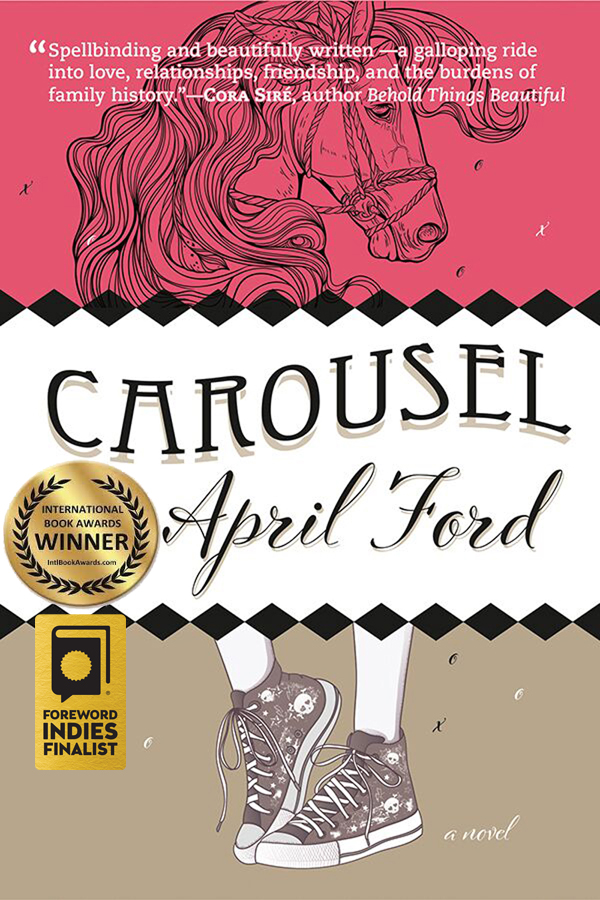

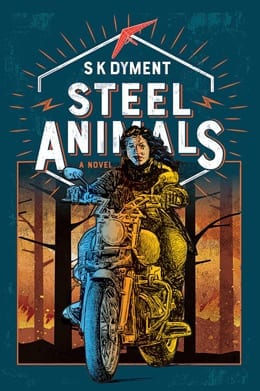
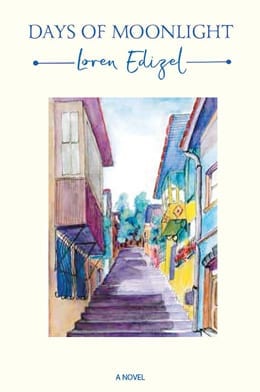
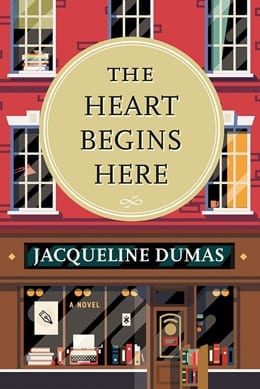
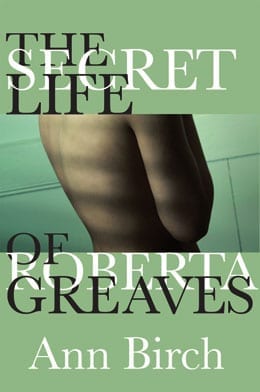
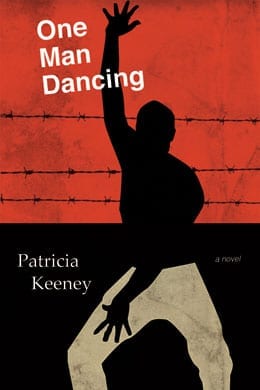
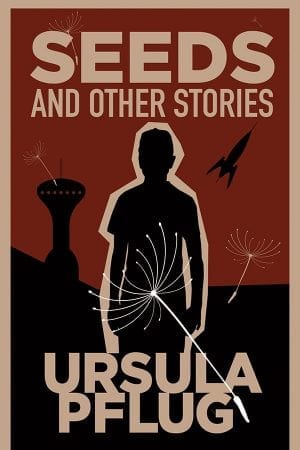
Inanna Admin –
Carousel by April Ford
reviewed by Timothy Niedermann
The Ottawa Review of Books – May 3, 2020
https://www.ottawareviewofbooks.com/single-post/2020/05/03/Carousel-by-April-Ford
Le Galopant is the oldest existing wooden carousel in the world. First carved in Belgium in 1885, it was shipped to the US for the 1964 World’s Fair in New York and brought to Montreal’s La Ronde amusement park in 1967. It was allowed to fall into serious disrepair over the years, but was finally completely refurbished in 2007.
Margot Wright has come to La Ronde alone to see the horses of Le Galopant. She is having difficulties in her marriage to Estelle Coté and is not sure why. They have been together for 25 years, since both were 20, and were married as soon as gay marriage was made legal in Quebec. They have just moved into a new home, a loft in the Old Port of Montreal. Margot has recently left her long-time job as a dealer in antique firearms. Estelle works at an art gallery, and she is a thin, glamorous woman, unlike the more average Margot.
As she stands in front of the revolving merry-go-round, Margot’s doubts run the gamut of confused and bitter emotions as she reflects on her relationship with Estelle, her own bizarre family history, and what she should now do with her life.
At La Ronde, Margot meets Katy, a 17-year-old American girl who is visiting for the summer. She, too, is fascinated by Le Galopant. Katy is the same age Margot’s mother was when she met the much older American man who would marry her and become Margot’s father. Like Estelle, but in different ways, Katy is everything Margot isn’t—young, brash, spontaneous.
Katy is a mirror for Margot, cropping up at the end of the novel to challenge her yet again as Katy’s doubts about marriage reflect Margot’s own.
Margot’s reflections on herself and her life take her back her childhood: how her mother sent her from the US to live with her grandparents on a farm in Quebec, how she set off on her own at 18, subsidized by her father, who was emotionally and physically absent from Margot’s life.
Carousel is a marvel of intriguing detail, little observations that give added dimension to the narrative and insight into the roiling confusion that is Margot’s state of mind. Alternately contemptuous of, aloof from, worried for, and passionate about Estelle, Margot’s thinking wanders in broader and broader circles trying to understand what is going on within her.
That theirs is a marriage between two women means that the emotional atmosphere is quite different from what it would be if this were a heterosexual couple. Ford has made both Margot and Estelle emotionally unsteady and self-doubting. Their back-and-forth bickering and resentfulness-filled silences toward each other, interspersed with bouts of impassioned intimacy make for an unpredictable narrative.
This is Pushcart Prize winner April Ford’s first novel, but she has published a collection of short stories (The Poor Children) as well as poetry and journals. In Carousel, Ford skillfully keeps us inside Margot’s mental bird’s nest of worries and regrets, so we are led by her confusion and can only sort things out as she does.
Although Ford doesn’t have Margot use the term until late in the book, it is clear early on that what Margot is going through is a mid-life crisis of sorts, a questioning of her identity and her purpose in life. Interestingly, her sexuality is not at issue. One of the accomplishments of the book is to depict the strains on Margot and Estelle’s relationship while accepting their sexual identity as entirely normal. The issue comes up in some encounters with other characters, but it is not belaboured. Their sexuality is a given in the lives of Margot and Estelle, and it is entirely accepted by their friends and colleagues.
That Le Galopet is a bit of a metaphor in Carousel is probably not giving anything away. The descriptions of the carved horses early on foreshadow Margot’s ongoing reflections about what has happened in her life—the people and events that have made her who she is—and what is now, irrevocably and unavoidably, going to change. This is a thoughtful novel, for the questions and quandaries Margot poses to herself are indeed shared by all of us at some point in our lives—ones we, too, must inevitably ask ourselves.
Inanna Admin –
Carousel by April Ford
reviewed by Jack Ruttan
CWS/cf 34.1,2 (2019): pg.182
Thank goodness, a book can take you on a vacation from the cares of current events. Whether you’re marooned in a foreign country, hiding in a cabin in the woods, or sitting on the front deck of a second-floor apartment in a major Canadian city during a frightening epidemic, it will transport you to another world. Even your body, life history, and gender end up becoming barriers that are easily skipped over when you open the right novel.
Stories let you live inside someone else’s skin for a while. A fictional character’s experience can echo with your own, or you can venture into uncharted feelings, experiences, and desires. Many of these lives, up until now, haven’t even broken into the mainstream. You may only have witnessed them second-hand, read magazine articles, or wondered about them from a far remove.
Margot Anaïs Soucy-Wright-Coté is the protagonist in April Ford’s new book, Carousel. She’s coming into middle age, she’s smart, stylish, and queer. She’s also headed for rocky shoals, relationship-wise. Some might envy her footloose, arty lifestyle, while others (as they do in the book) will censure her and call her names.
But it’s better not to describe Margot and her friends too much here. A good deal of the fun of reading Carousel is putting together the pieces of the story. Jumping forward and backward through time, via flashbacks and memories, it’s the literary equivalent of a Quentin Tarantino movie. Portrait assemble bit by bit, emotions rise and fall, reminding the reader of the fairground rides Margot documents with her digital camera.
Carousel is ups and downs—“an emotional roller-coaster” for the protagonist. Her happiness, her relationship status, even her living situation changes from chapter to chapter. It’s kind of an updated Jane Eyre, accelerated for the twenty-first century, with smartphones and texting.
Via the miracle of Facebook direct messaging, the author April Ford shared with me a bit of how the novel and the characters came about:
Carousel was born in November 2010, shortly after my first trip to New York City. I rode the Central Park carousel and visited the Met to see Rosa Bonheur’s magnificent, gigantic painting, “The Horse Fair,” while I was there, and the confluence of my excitement over visiting nyc for the first time and the stimulation of experiencing the carousel and the painting were enough to launch my creative mind into a whole new space!
Margot and Estelle were, at first, derivatives of this academic couple I knew, who were rather mean-spirited women but really cool dressers. Katy, Marianne, Étienne, Bertrand, Olivier, and the Cotés all came from god knows where, and they were all fun and freeing to write. As I never plan what I’m going to write, I always looked forward to what Katy and Bertrand would say next. These liberated characters were what Margot needed, I think, to get her head out of her ass.
Your writer here has a bit of experience with the art world, and various types of collectors of precious objects, which feature here. Ford’s details ring true. Margot also has the requisite unhappy childhood, which makes for compelling reading. Though like most stories, it’s much better read about than lived.
April Ford shared with me some of the challenges she encountered creating her story:
I wrote the first chapter of Carousel in, like, a few hours. I was high on the adrenaline from having this whole new world unfolding in my mind, and I was also freaked out; I didn’t know much at all about guns, fine art, or the history of carousels.
What I did know was this novel was going to happen no matter what. I had enough experience as a writer to recognize it would be a long-term project. I tested the graduate workshop waters with the first chapter of Carousel in January 2011, and my faculty mentor, Pulitzer-prize nominee Jonathan Dee, gave me the advice I needed: Don’t get caught up in research (I was quite anxious at the time about not knowing enough). Write the story. The story is the point, after all. In Dee’s advice, I found the freedom I needed to let Carousel grow and flourish in my mind.
By the time I was ready to return to the novel—a few years later!—I was able to intuit when to pause from the page and learn more about guns, art, carousels, and so forth. I enjoyed these pauses, because I couldn’t predict how my findings would influence the next sentence I wrote, the next direction the novel would take. In many ways, the ship steered itself!
It’s a steady course that the author steers through the shoals of city life, difficult parents, and the demands of friends, lovers and employers. If this reader had a quibble with the novel, it was that it was too short. Ford creates a world and inhabitants which leave you a little sad towards the end. Because the story was good company.
Jack Ruttan is a Montreal-based writer and illustrator, who has a distant view of La Ronde from his front balcony. Find out more about him at http://mruttan.ca.
Inanna Admin –
Carousel by April Ford
reviewed by The Minerva Reader – June 22, 2020
https://www.theminervareader.com/
What a joyful book! Poignant, heart-breaking, heart-affirming and comedic, the characters are true originals and yet as familiar as long-lost friends. A marvellous debut novel about family madness, sexuality, aging and obsession. Beautifully layered and detailed, this book is full of wonderful surprises.
Inanna Admin –
Carousel by April Ford
reviewed by The Montreal Review of Books – July 23, 2020 (Summer 2020 issue)
https://mtlreviewofbooks.ca/reviews/carousel/
It’s a beautiful balmy Friday, and Montreal author April Ford has just wrapped up another week of teaching ESL online. She’s already spent hours in front of the computer, but she seems stoked to tack on a few more to discuss her debut novel. It would be sweet to meet in person, especially outdoors – clear skies promise stars – mais, tant pis, Montreal’s terraces, normally in full bloom this season, are closed. Same goes for La Ronde, the amusement park that houses the historic carousel around which Ford’s riveting story revolves. Crowned Canada’s epicentre for COVID-19, Montreal is still spinning at half speed.
Yet, as we get talking via Zoom, tucked beneath our respective roofs, lockdown concerns temporarily fade while two cats occasionally appear before the camera, foreshadowing something Ford mentions later: “I’m an animal person,” she says. “I grew up riding horses, having cats.” Speaking of horses, Ford’s face lights up when I tell her I love that she’s dedicated her novel to “the stargazers,” honouring the classic carousel creatures that weave wonderment into her modern-day story about midlife crisis. “Stargazers are the ones with their heads looking up at the stars,” muses a seventeen-year-old character named Katy, messing with protagonist Margot Soucy’s middle-aged mindset. “Napoleon’s a galloper, just like all the horses on here, even the ones in front of the chariots – usually those guys are standers. Imagine being stuck in the same pose all your life, seeing the exact same thing day after day after day? I’d want to be a stargazer if that was the case. Poor Napoleon, I wish you could see the stars.”
Forty-five-year-old Margot, who’s “never risked anything greater than a found dollar on a lottery ticket,” has ditched her long-held career as an antique firearms dealer in an attempt to sidestep a midlife crisis. Yet none of her newfound freedom has helped revive romance with her gallery-manager wife, Estelle: “After two-and-a-half decades with a woman whose gasp-worthy winsomeness and intelligence I had avowed to protect and nurture for the rest of our lives, I was bored,” Margot confesses. Hoping to break out of their rut, she heads to La Ronde to photograph Le Galopant, “the world’s oldest galloping carousel” for her one-and-only, who loves “beautiful things.” But life goes totally tilt-a-whirl when Estelle uncovers a secret Margot’s been keeping about her family. The harder Margot tries to flee her painful past, the dizzier she grows from her unwelcome preoccupation with carefree Katy, the young woman she’s met at the park; and the more her memories cycle ’round, like old carousel horses – an inescapable ring of Napoleons and stargazers nudging her to buck up and face her fears.
Asked whether she’s a stargazer or a Napoleon, the author throws her head back, laughing. “I feel like, oh God… I’m a bipolar stargazer or a bipolar Napoleon.” Witty and upbeat, at forty-one, Ford appreciates Katy’s “in-the-moment” spirit, but like Margot, has had enough sobering experiences to keep things real: “I’d like to be a stargazer. I think I have it in me, but life sorta made me put a sunroof over it.”
Ford recalls catching the writing bug while living in a group home for the last year and a half of her teens, a period during which she had a serious car accident that halted her horseback riding and derailed her hopes of studying criminology. Injuries included head trauma that stole her hearing in one ear and peripheral vision, but – as if by providence – graced the future author with markedly improved language skills. She remembers a meeting that hinted at her literary fate even before her accident. “Someone came in one night,” Ford says. “I think she was a social work student at McGill doing an internship, and she did a writing workshop with us in the group home. I was sixteen and a half at the time, and I thought it was terrific.”
Grateful for this positive experience, Ford has given back over the years as a writing mentor for at-risk youth. Today, she teaches adolescents through the QWF’s Writers in the Community program, and is proud to have passed the bilingualism test at l’Université de Montréal, where she’s returned to school to study social work. “Other than writing fiction, I guess my passion and drive have always been to work with people who are struggling,” she says, excited to add a BSc to her creative and professional writing BAs from Concordia and an MFA in Fiction from Queens University of Charlotte.
Meanwhile, she’s thrilled that Carousel, her third book after Death Is a Side-Effect (poems, Frog Hollow Press, 2019) and The Poor Children (short stories, SFWP, 2015), is ready to whirl. While uncertain about launching during a pandemic, she recognizes that there are “trailblazing opportunities for the arts right now,” and hopes Carousel will do well since it has a “possibility-of-restoration tone to it.”
The eye-catching Le Galopant, picked apart for repair in the novel, is indeed a striking metaphor for rehabilitation as Margot and Estelle embark in couple’s counselling. When the aging carousel is threatened with closure, Margot’s panic ripples through the reader, who’s mesmerized by the prickly yet magnetic heroine’s clumsy efforts to mend her marriage.
While midlife crisis isn’t a new theme, Ford’s treatment of it feels fresh, voicing an under-heard side of the story. Self-identifying as bisexual, the author notes she’s published little LGBTQ work before. “I have a lot of it written,” she specifies, “but I’ve had a much harder time having it published, which says something, I guess.” Stressing that she’s tired of stories about men, she proclaims: “So, with Carousel, I’m going to be the voice that I would want to read; I want to talk about women.”
Ford’s commitment has yielded great results: well-developed characters gallop through this poignant exploration of intergenerational trauma, skillfully offset with dark humour. It’s hard to forget a protagonist like Margot, whose “two-tone spectator shoes” and “black merino derby hat” set her apart from chapter one. Emotionally, the story is as much a rollercoaster as a carousel, keeping readers on the edge of their seats until the very last page, wondering whether Margot and Estelle will survive the ride.
Lending credence to the adage that you should write what you know, Ford chose well pinning La Ronde as her backdrop. Loving carnivals as a kid, she’s been returning to the park every summer since her early teens, braving the wildest rides. “My favourite time of day in a carnival, which I really tried to recreate at the end with Margo, is twilight,” she emphasizes before describing the kind of sophisticated adventure that sets in once the screaming kids are gone and the rides are lit up.
As our conversation winds down, it feels fitting that, beyond all the rooftops, it’s twilight in Montreal, Ford’s favourite hour, suggestive of future feats. While the pandemic may prevent the author from visiting her old haunt this summer, it’s hard to imagine life will be dull. Her next novel already underway, she’s got Carousel, a dazzler of a ride, all lit up for a round of adventure.
Kimberly Bourgeois is an incorrigible stargazer who writes and sings in Montreal. Songs from her two EPs can be heard at kimberlyandthedreamtime.com.
Inanna Admin –
Carousel by April Ford
reviewed by Lukas Rowland – July 31, 2020
https://lukasrowland.com/2020/07/31/carousel/
April Ford carries the reader confidently through the streets of Montreal and the chaos of La Ronde in her debut novel Carousel. She introduces us to fascinating characters who cannot see themselves the way others see them, and takes us on a breathtaking ride through the life of a woman falling apart so that she can put herself back together, stronger and with more purpose.
I have never encountered a character quite like Margot. I loved her voice, her reliance on structure to keep herself on track, and her stiff refusal to properly stop and look at herself. I was charmed by this woman who was so sure of who she was because she never stopped to ask herself the question. I wanted to reach and tell her it would be okay, because I understood just how terrified she was of self reflection.
I have a habit of falling in love with characters who are a little hard-bitten, sarcastic, and make their ways through life in defiance of the bullshit they’ve had to endure. Plucky, you might say. They give me hope that we can soldier on in the face of uncertain futures, and make the kinds of decisions we can live with. Worst case, we go down as nothing less than our unapologetic and authentic selves!
And of course I knew there would be no book if the main character did not step off the cliff of her stable life into the gasping abyss of the unknown. She’s given a little push in the form of couple’s counseling (can’t relate), which her wife initiates, and soon Margot is caught in a dizzying whirl.
The book revolves around the titular carousel (not a merry-go-round, you will be educated), a feature at the amusement park La Ronde. I’ve been once with my mother and sister, who were visiting. Not knowing anything about the park, we rode the Vampire first, and I spent the next two hours wishing the world would stop turning so violently. If I saw le Galopant then, I was in no state to appreciate it, and I’m honestly too concerned about rising covid numbers to feel safe going now. But hoo boy do I really want to go out and have a proper look after finishing Carousel.
…Carousel is also this year’s recipient of the International Book Award for LGBTQ fiction! And with a worldwide pandemic having a pronounced effect on independent press, it is more important than ever to show your support for local authors by purchasing their work. I could not put this book down, and the ending made me cry, which is exactly what I want from a story.
Inanna Admin –
Carousel by April Ford
reviewed by Caitlin Hicks
New York Journal of Books – August 5, 2020
https://www.nyjournalofbooks.com/book-review/carousel
Winner of the 2020 International Book Award for LGBTQ Fiction, Carousel is the debut novel of April Ford and the story of a middle-aged woman caught between the buried emotional impact of her devastating childhood and life on the precipice of retirement with her beautiful true love, Estelle.
The story opens on a description of the world’s first galloping carousel, Le Galopant, (otherwise known as an antique merry-go-round)—magnificent horses frozen in place, yet still turning in circles for riders in an amusement park on a humid July evening in Montreal. Here we meet Margo, via her interior monologue, as she provides a short history of antique carousels, as she tries to photograph something interesting for her wife, and questions when was the last time she and Estelle had done something romantic together? Here Margot admits “After two-and-a-half decades with a woman whose gasp-worthy winsomeness and intelligence I had vowed to protect and nurture for the rest of our lives, I was bored.”
The carousel itself anchors the story that revolves around it—a glimpse into a vulnerable relationship in the wake of a 25-year history and the sudden discovery of essential emotional information from Margot’s past. This history, long ago stashed away, ignored and buried, becomes achingly meaningful as Margot is forced to look at it and acknowledge how it shaped who she is.
As the story opens, Margot photographs Le Galopant in a confused effort to do something nice for Estelle (whose career focus is the art of photography and who has been oddly obsessed with the ancient carousel). Here she meets a lanky young woman at 17 who captures her gaze and ultimately becomes the temptation dangling before her in her dissatisfied state of restlessness. Her name is Katy, and during this evening in July, Katy snaps a photo of Margot atop a galloping horse on the carousel, a photograph that Estelle would claim “in the twilight of our marriage, the most telling photograph of a person she had ever seen.” The rest of the story is the circuitous path toward understanding what that photograph might be and how it could be so telling.
At the outset, Estelle mirrors her partner’s unease, and has been meeting with a couple’s counsellor named Weinstock for the past five months, a counsellor who gives them a homework assignment—some kind of physical distancing over a vague timeline. As Margot goes through an evening at a fancy hotel by herself, the reader endures this temporary separation through her simmering discomfort and ambivalence of being forcefully separated from Estelle.
Constantly referring to Estelle as “my wife,” Margot perhaps unintentionally insinuates possession rather than simple relational identity. After its use over and over when Margo could simply say, “Estelle” instead of “my wife,” these words of ownership and societal definition betray an underlying defiance and insecurity inherent in Margot’s personality and her relationship with Estelle. Although it seems that Margot is the straying member of this partnership, and she controls the narrative, the reader is forced to guess at Estelle’s intentions.
“My mother had already gone mad by the time she gave birth to me,” begins Margot, remembering the secret of her life that she has kept from Estelle. As we learn about the remarkable events when Margot’s beautiful mother met her rich and impetuous father, as we learn about Margot’s neglected childhood, as she meanders through her own story, like the child she was when she first experienced it, the devastating emotional reality of her experiences build, one on top of the other. As Estelle discovers the truth of Margot’s origins, in unopened letters from Margot’s mother, Margot is forced to admit that her relationship with Estelle was based upon a lie. Of course, Margot would be having a crisis of the soul. One can only keep the lid on this kind of history for so long.
Throughout this journey, even as she is in the same room with Margot, Estelle comes in and out of focus, but in the snippets where we experience her, she is surprisingly faithful, loving and upbeat about their union; she works hard to unlock Margot’s secrets—secrets, that Estelle has discovered, stand firmly as obstacles to deeper intimacy.
The discovery of the truth that Margot had tried to escape through denial are teased out over the length of the novel, until finally, at Estelle’s insistence, both are in the same room with Margot’s institutionalized mother, Marguerite. It is here we feel the weight of witnessing a frail life almost at its end, having been wasted in a cloud of mental illness and alcoholism. From Margot’s POV, (the child returning to the devastation of her meaningless childhood), we experience the contempt of Marguerite’s altered personality, and understand that a parent can always injure her child.
Written by a deft storyteller, the novel features delightful snippets of description around every corner: “When I turned back, Estelle looked at me like a little girl stricken from having failed her spelling bee.” In describing her mother’s emerging “catastrophic flaw” Margot creates a moving picture of her own desperate discovery: “Now that it had emerged, like a swimmer finally succeeding in breaking the surface after being held under water by a bully, it was swiping and clawing at everything in its way . . .” And although the story must go down the wounding path of Margot’s childhood, the novel is light, its characters optimistic and lovable and the experience of reading it—delightful.